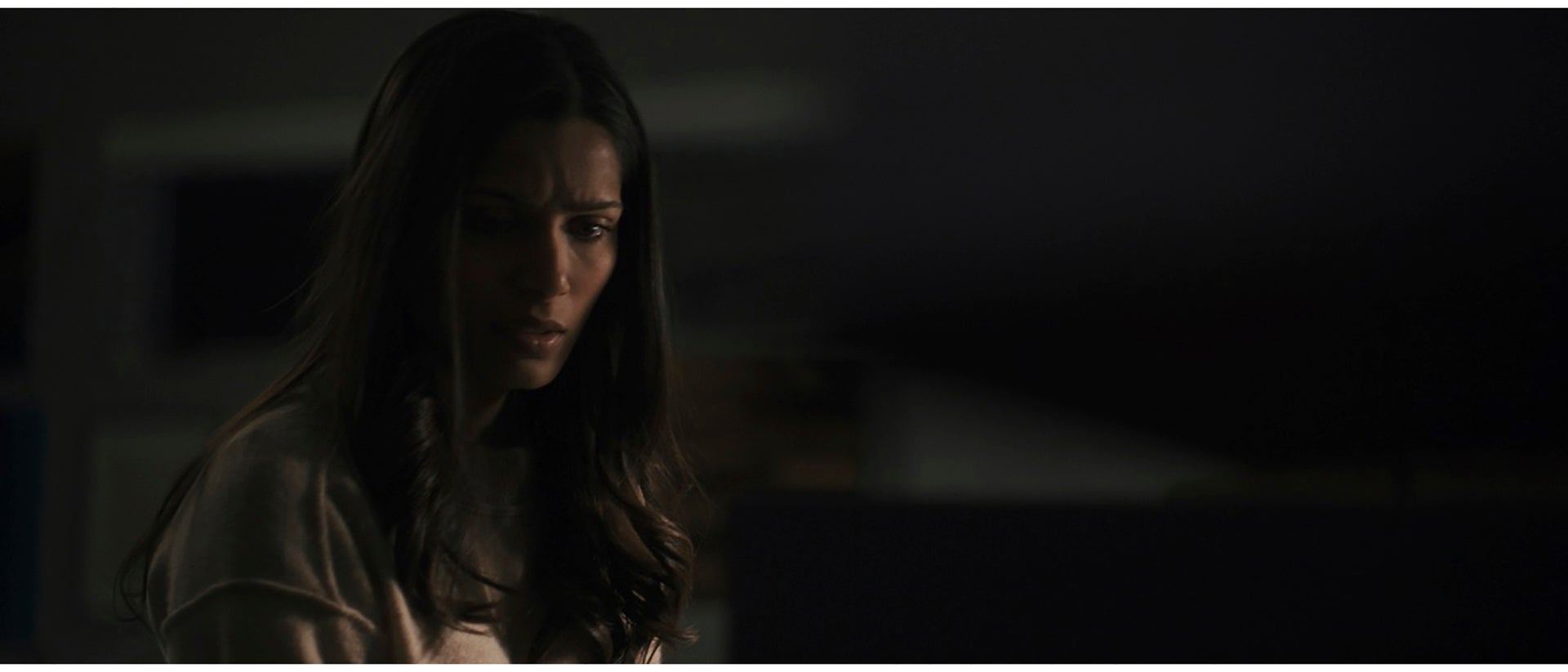
10-22-2021 - Case Study, Gear, Technology
Shot on VENICE - Eric Lin Visually Explores Environment, Moonlight, and Psychology in the Netflix Thriller, "Intrusion"
By: Michael Goldman
Cinematographer says the movie exemplifies how camera, lenses, and light can enhance a story’s central themes.
As big fans of the thriller genre, director Adam Salky and cinematographer Eric Lin were excited when the new Netflix film, Intrusion, landed on their desks. For this particular story, they quickly realized the environment where the tale unfolds would play a crucial creative role—a challenge they were eager to tackle. The movie, shot last year over 25 days near Albuquerque, New Mexico, probes the psychology, marriage, and secrets of a couple (Freida Pinto and Logan Marshall-Green) who have their seemingly idyllic lives ripped open like a scab by a couple of mysterious break-ins in their architecturally stunning, but incredibly isolated home. What oozes out of that wound is the revelation of a stunning secret about one of them, and what exactly is, or is not, going on in a secret part of that home.
Lin, a previous collaborator of Salky’s, says that the story’s tension is largely built on the foundation of the suburban mansion they selected, dressed and shot to appear totally isolated in a dark, quiet, and wide-open desert location outside Albuquerque. Therefore, planning exactly how to shoot the film in a place where low light, shadows, a desert palette, and modern architecture all collide was a central challenge.
“Both Adam and I share a real love of thrillers,” Lin explains. “It’s a genre I’m captivated by, especially ones where ordinary people are put in extraordinary situations. We see a lot of thrillers in dark places, but more like out in the woods. This film takes place out in the open. We wanted to embrace the desert environment, emphasize the visual vastness of it, where you see the horizon everywhere you turn, but at night it becomes pitch black. We wanted to tease out the interesting tension from that environment.”
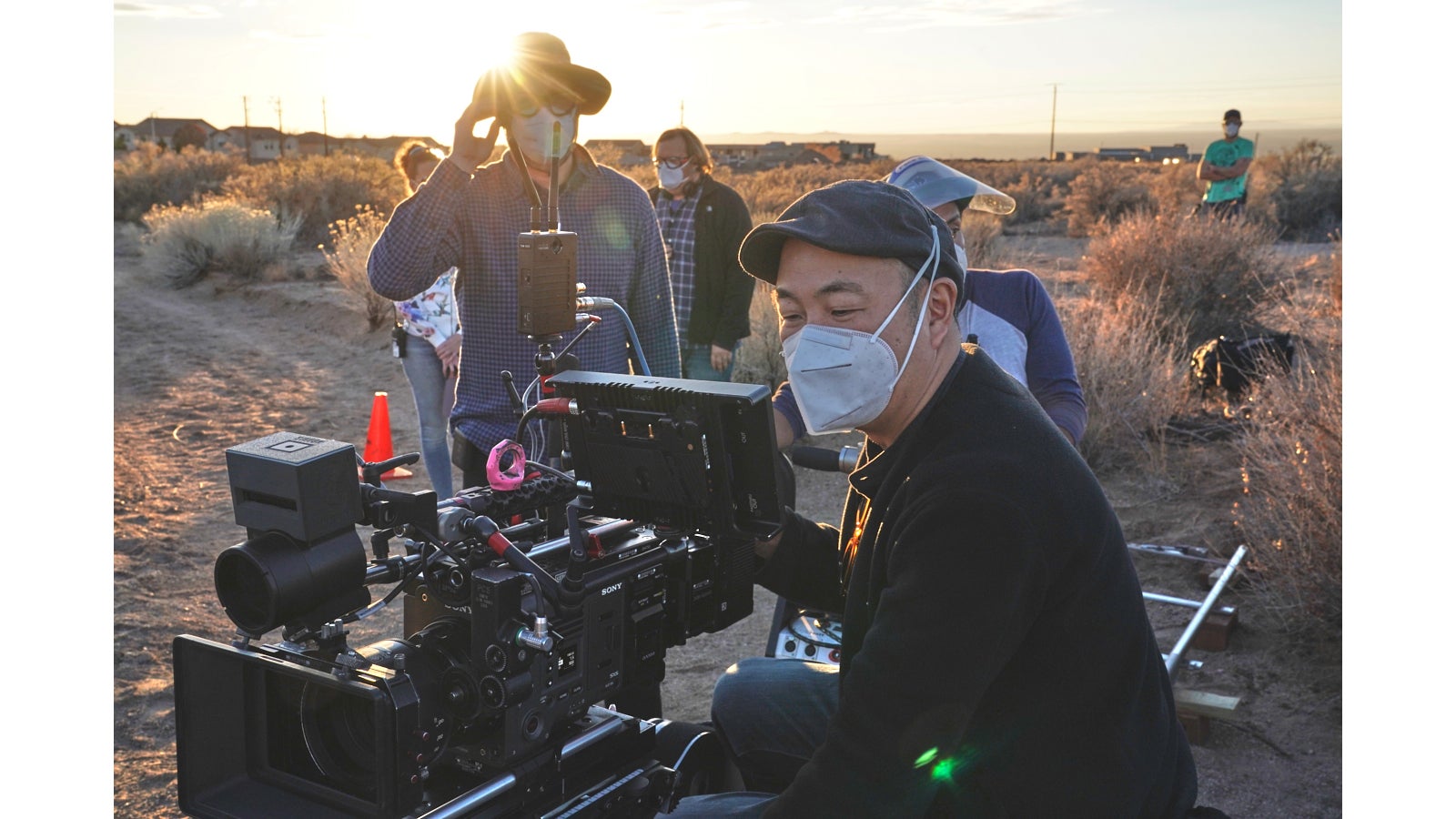
DP Eric Lin
Additionally, Lin adds, the lead character played by Pinto—Meera Parsons—goes through a psychological upheaval during the course of the story, as much of what she believed about her life is suddenly thrown in doubt while she doggedly digs for the truth. So, the cinematographer says, “the visuals also had to start from what that character’s journey is—how could we tease out the subtext of the emotional world of the character in a visual way? Her world changes as the story goes along, so we wanted to see the story through Meera’s eyes and visualize those changes.”
As part of this mix, Lin says the filmmakers were committed to having “shadows invade the house, feeling more light from outside coming in than light being generated inside the house—the world starting to impose itself on [the couple] through moonlight and architectural lights outside. We wanted to mine their relationship, their journey, and represent it visually a certain way.”
To maximize their approach to such challenges, filmmakers turned to the Sony VENICE 6K digital motion picture camera system. Lin says there were several reasons for this choice.
“For one thing, I thought the colors and the depth of the full frame sensor were very interesting,” he says. “I also liked the modularity of the camera, and our ability to use the Rialto [Extension System]. That was something that had to come into play on Intrusion as we had to get the camera into some odd corners in that house, and also for car work. But in particular, we loved the characteristics of the full-frame sensor—that we could, for example, isolate the characters more in a wide shot with shallower depth of field.
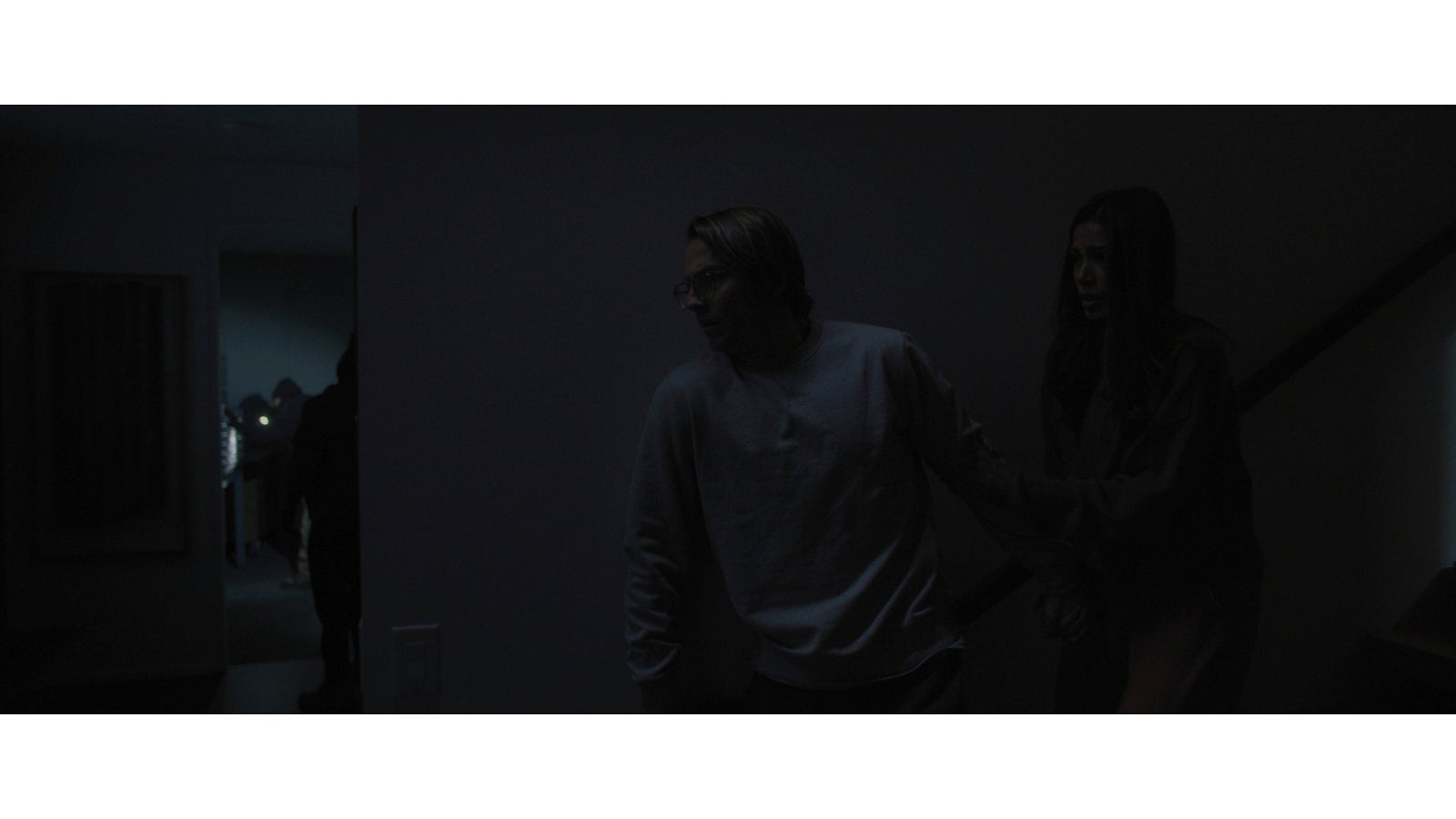
“That is something I wanted to play with. To get a depth of field, and a field of view unique to full-frame sensors, especially with zoom lenses, was a big deal for us.”
Lin’s lensing choices were guided by his desire to use “more vintage lenses to achieve organic images. We wanted a soft, organic look to the center of our images, even if we went very dark or high contrast in terms of lighting. I had shot with Canon K-35 Primes in the past and loved them—especially how they render the falloff at the edges and the softness of the color. Compared to ultra-modern lenses, we got a real gentleness that was definitely sharp in the center, but not edge-to-edge sharp, which appealed to us since we were trying to represent Meera’s world and show her often isolated from the background.”
Lin also utilized Optimo Zooms for particular sequences when trying to heighten tension to illustrate, as he puts it, “the world imposing on Meera.”
Overall, he shot the movie 6K 17:9 with frame lines for a 2.40 extraction, relying heavily on the VENICE camera’s dual-ISO capabilities.
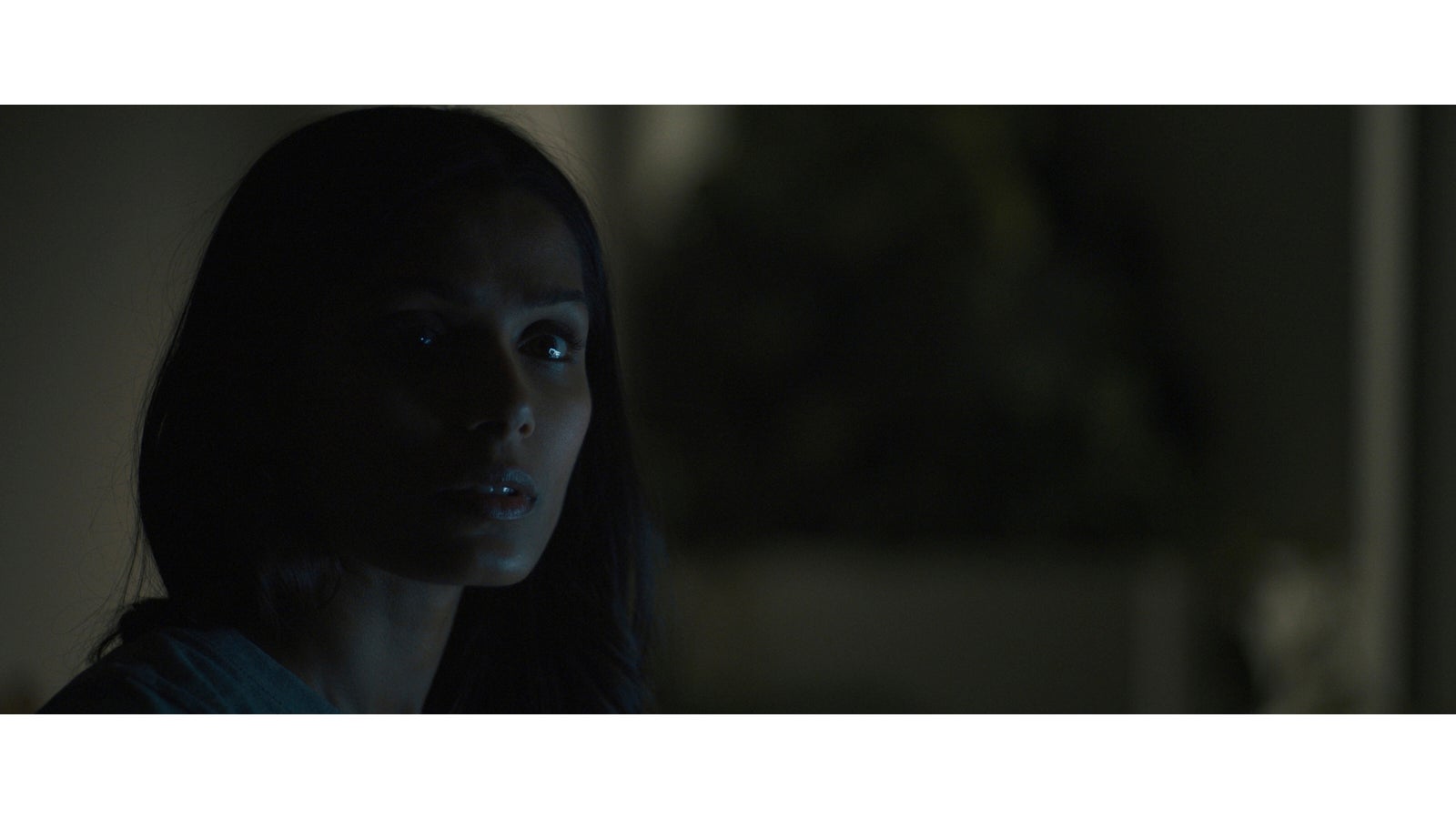
“ISO was another big reason we chose VENICE,” he elaborates. “I tested the 2500 base ISO on the camera in the pasts and loved how clean it was, and how little light we could work with. I told my gaffer [Waylon Brady] when we were studying the moonlight that I only needed maybe four-to-five foot candles to get the exposure I needed for [moonlight shots]. So, we shot with both base 500 ISO and base 2500 ISO. When I shot 500 ISO, I rated it 800, and when I shot 2500, I rated it 2000. We used the base 500 ISO for much of the film—night interiors and all day exteriors. We used base 2500 ISO when we were shooting night exteriors, for the key break-in sequence, and also a car accident sequence at night. I was real impressed by how the color fidelity held at the 2500 base ISO.”
The night work at 2500 ISO was crucial to ratcheting up the story’s tense mood by allowing filmmakers to capture facial expressions even when characters were silhouetted in moonlight. In fact, Lin says the filmmakers, in collaboration with colorist Roman Hankewycz, who performed the final digital intermediate color grading work at the Harbor Picture Company, built two separate look-up tables for the project—a primary one and one specifically for moonlit sequences.
“A separate LUT was created solely for moonlight scenes,” Lin relates. “We wanted a kind of blue but silvery quality to the moonlight, and we did a bunch of camera tests with it to find the color temperature of the moonlight we wanted. Roman then shifted the hue in the LUT so that it became more silvery-blue. The LUT also had a little padding built in, which pulled down the exposure a little bit. I knew that this way, I could shoot to the level of darkness I wanted on set, and when we got into the DI, I would have a little extra room to bring up faces without getting too noisy if I needed to.”

Lin emphasizes that his approach to designing a color palette was to come up with a “recipe” filmmakers liked, and then bake in that look as much as possible from the get-go. Therefore, having the Harbor Picture Company and digital imaging technician Tim Gregoire involved early on in LUT development allowed the filmmakers to develop a look that would carry through without radical departures from pre-production to the final DI. Hankewycz adds that “we ended up with a good overall LUT, which worked for daytime and night interiors, but knew we would need the second LUT for the moon-lit scenes, because they had very different lighting parameters. Since Eric shot those scenes with the 2500 ISO base, the contrast level had to be modified to make the available light look like soft moonlight.”
“I find that spending time in pre-production creating a show LUT that you like and can depend on has a massive effect on the rest of the pipeline,” Hankewycz continues. “It means the DP can preview a strong representation of what each scene would look like as they set up and light shots, the director and producers could see the DP’s intended palette from the first time they see dailies through editorial, and at each preview screening. And it means that when we arrive at the final grading stage, all filmmakers have had a good sense of what they like or wish to change about the imagery.”
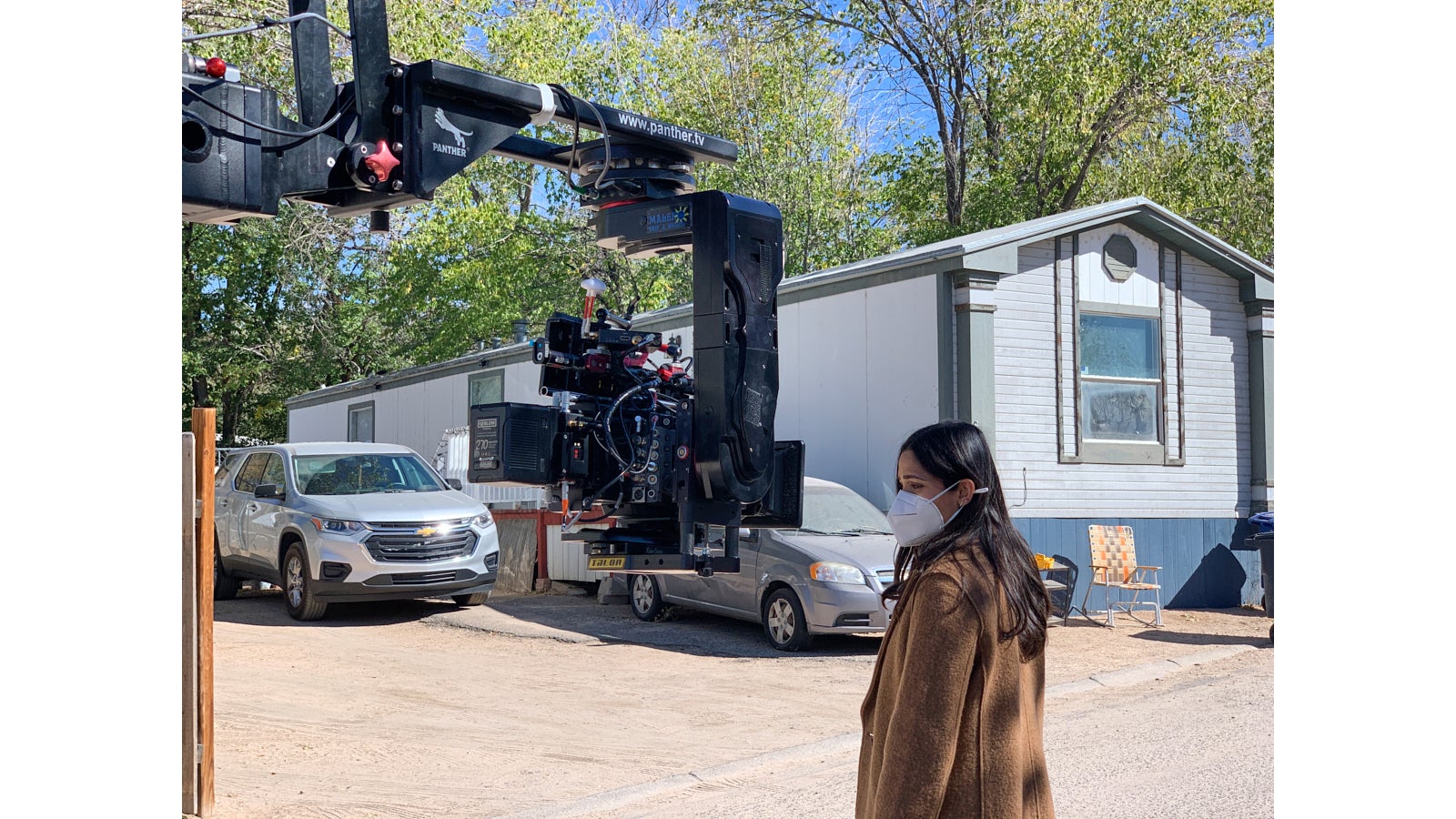
Hankewycz describes the film’s overall palette as “creamy, slightly warm with a touch of coolness to the shadows. We worked to make sure no specific colors became too saturated, creating an even and clean look. This palette worked nicely with the New Mexico landscape and the architecture of the house, and then we brought elements of that palette into the moonlight scenes by keeping the highlights a bit subdued, and by finding the right level of coolness—not really a blue or cyan, but more silver.”
In terms of camera movement and style, Lin emphasizes that his team’s approach “evolved” along with key story beats, starting off with lots of work on dollies and sliders to illustrate what he calls “a more stable image” early in the film, when life for the couple appears calm.
“Then, as things start to fall apart for them, things become more kinetic, so we went to a lot of Steadicam, and a little bit handheld toward the end of the film,” he adds. “The camera language was designed to track Meera’s own journey in the story, starting in a stable place, and then it becomes unmoored, so we start to float with her as she searches for answers.”
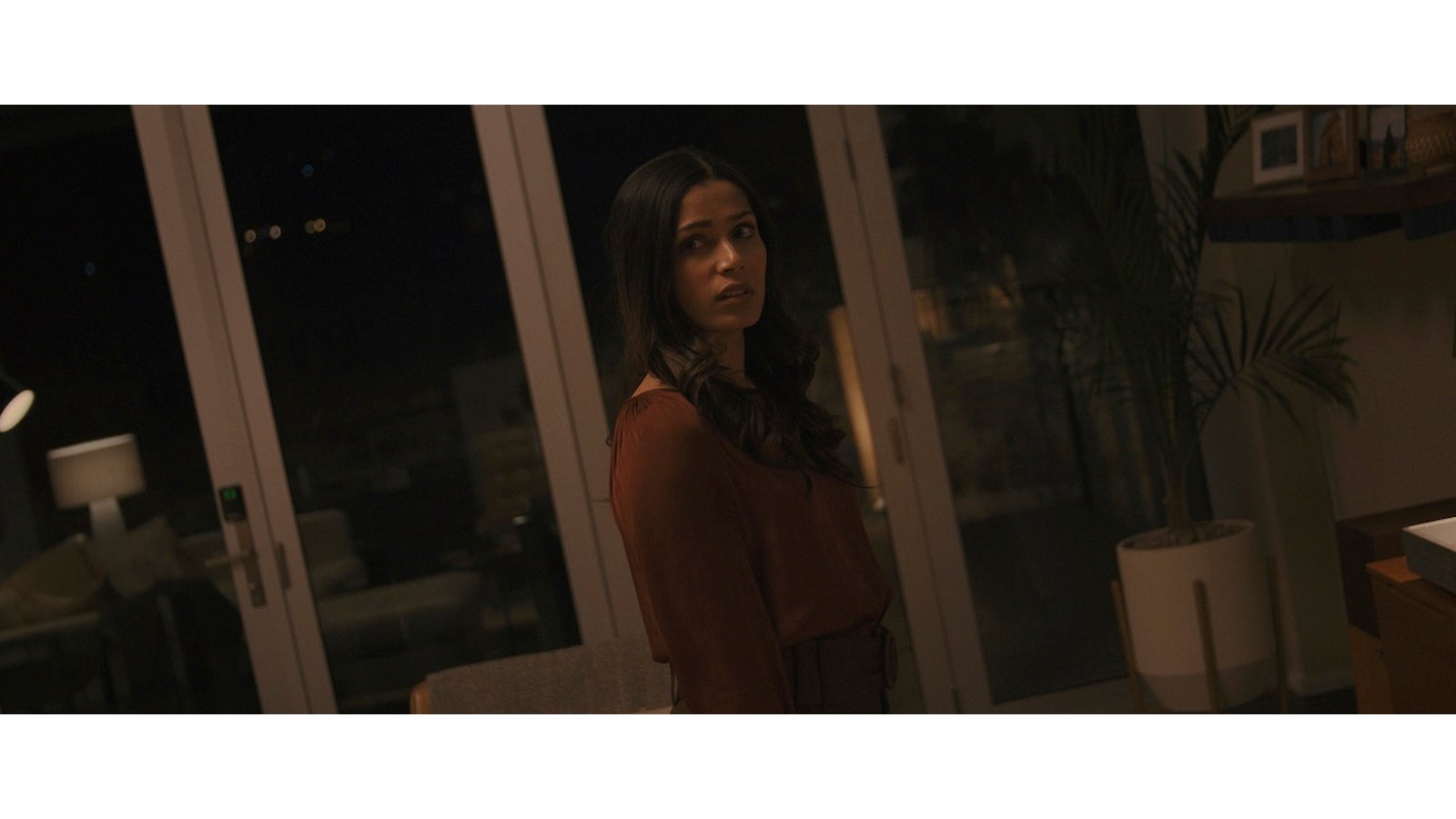
The ultimate expression of this philosophy came at a particular point during the film’s party sequence, when Meera makes a shocking discovery, and the camera starts twisting wildly in the frame as a result. Lin says there was discussion about simply building that effect in post by shooting 6K 3:2, extracting a 4K 2.40 frame, and rotating it. “But I fought off that idea because it was such a heightened emotional moment for Meera that we needed to make sure our camerawork was enhancing Freida’s performance. So, though it took some time to rig, for those twisting shots that take place inside the house, we used a Three Axis Lamda head to rotate the camera manually while zooming in on the lens. After the first take, Adam turned to me and said he felt his stomach drop when the camera move started. It was the right decision to do it in camera. We were able to feel the effect of that shot in the moment and refine it then and there, instead of guessing what it would be like in post.”
As noted, natural light, moonlight, and exterior architectural lights on the house provided much of the film’s lighting, but Lin adds that he and Brady wove in enhancements when they were subtly needed due to the odd geography of the house itself in some cases, and the story’s great reliance on a specific moonlight aesthetic.
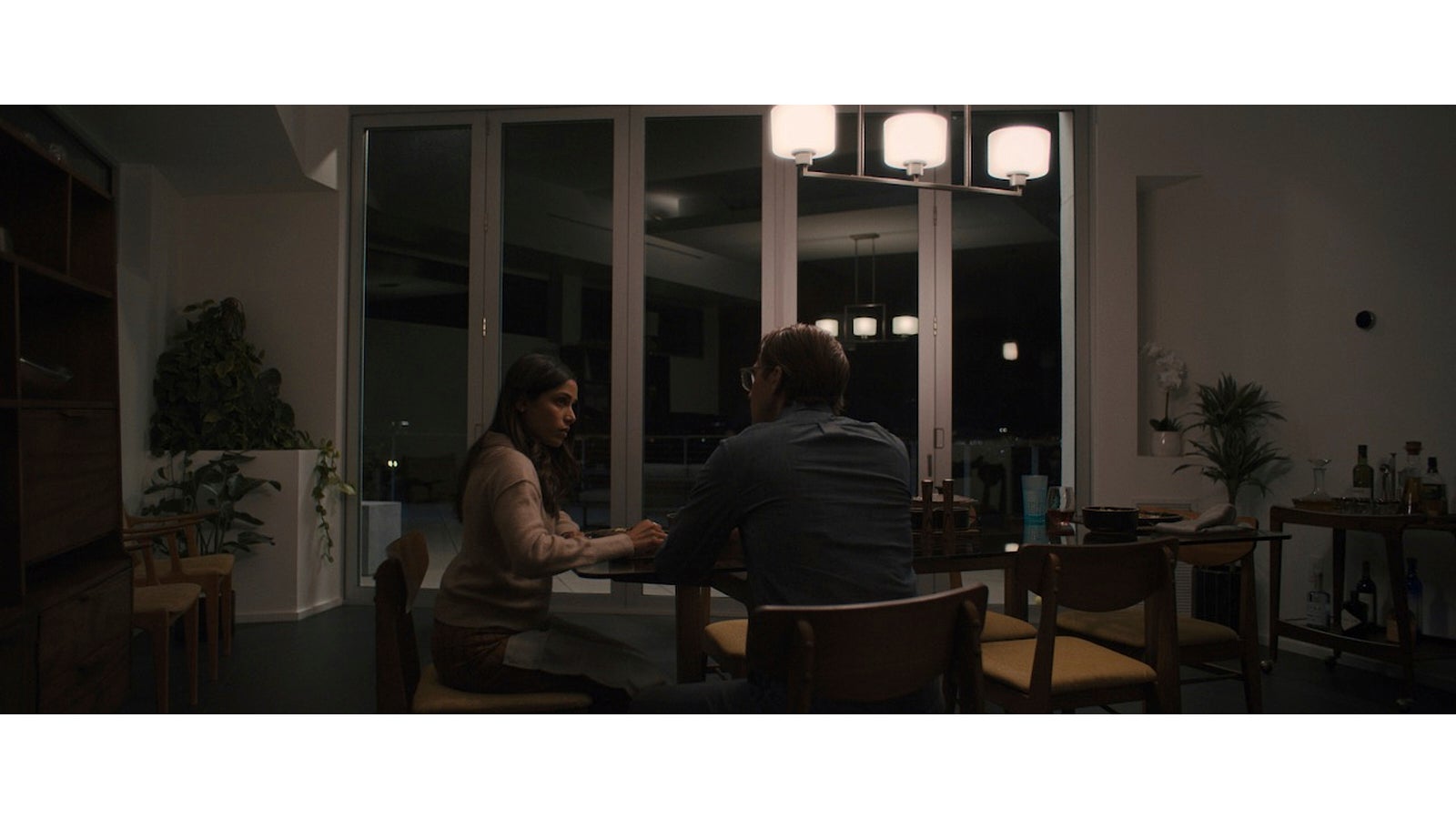
“The things that make the layout of the house so interesting, like lots of corners and pockets, also made it more difficult to light,” he says. “We couldn’t just use a couple of large lamps to get light where we needed it. Often, for moonlight scenes, we would put an 18K on a Condor out in the field [in front of the house] to start, but there were always little corners where our large moonlight source couldn’t go, and we would have to use a handful of closer sources, like SkyPanels, scattered around the roof itself to extend the moonlight into those corners.”
Lin adds that for many low-light scenes, the filmmakers would also use battery-powered Titan LED Tubes, hiding them in small places to isolate pockets of light as needed.
“We wanted to keep the characters as edge-lit as possible, so [the viewer] would feel the darkness of the location, and yet I wanted to get a certain glow on their faces as if it were moonlight bouncing off the wall or the floor and then catching on their faces,” he says. “So small LED units inside as a soft wrapping sort of key light, with the big 18K outside the window to break in and establish the moonlight, worked really well.”
The other “character,” of course, was the house itself, which is spectacular when seen from the outside. Lin emphasizes that filmmakers “wanted to give it a lot of personality, so we up-lit a lot of the front of the house and planted a lot of our own movie lights to play with the architectural lights and augment how the house itself was lit.”
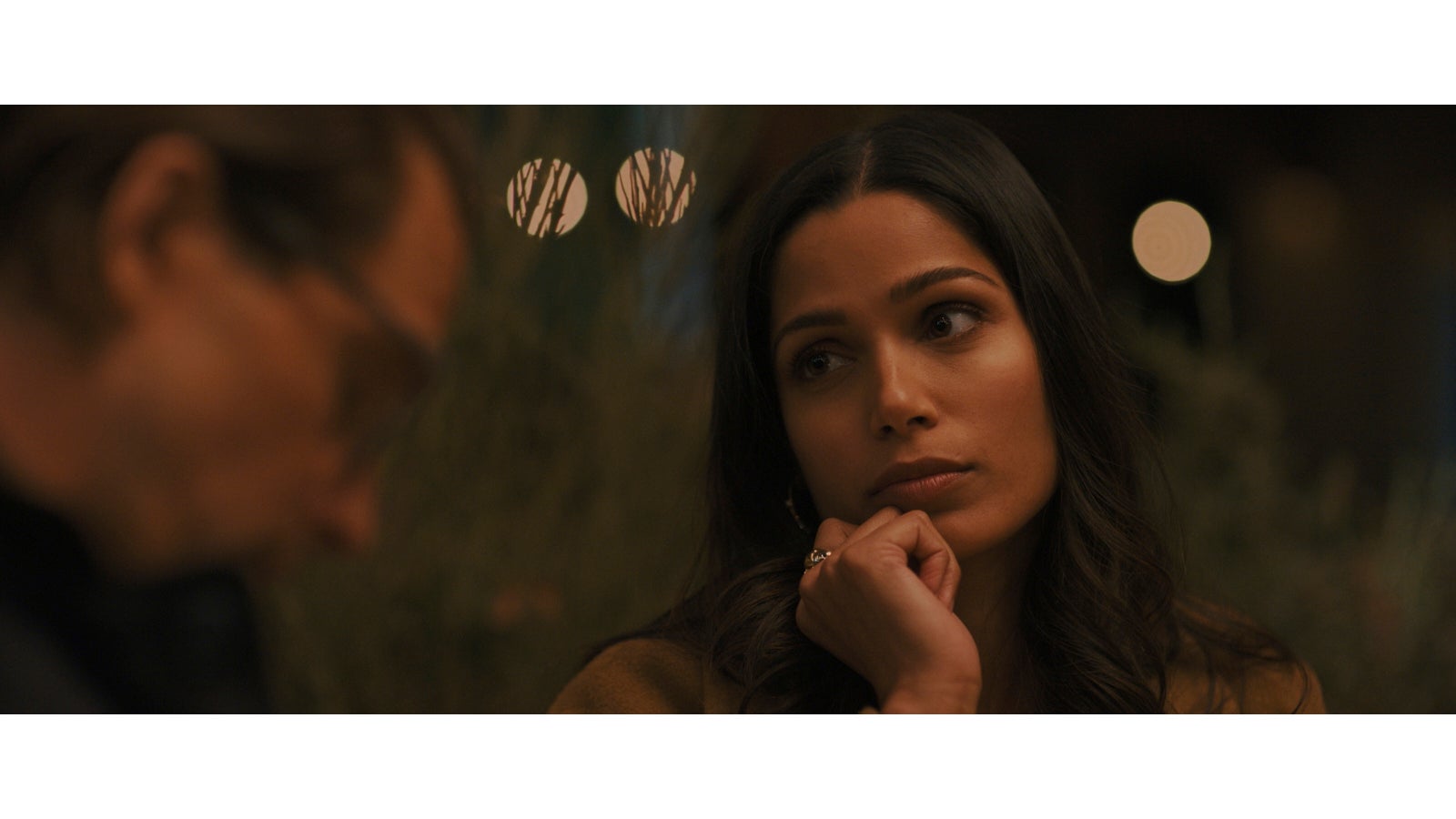
In summary, Lin feels strongly that Intrusion is an example of filmmaking that strategically utilizes the camera to explore the psychology of characters.
“In this film, we are really seeing the world through Meera’s eyes as her world changes,” he emphasizes. “So, visually, we tried to keep up with that by finding ways to illustrate how her home and environment change as she starts to unravel secrets. We designed our visuals and chose our tools to literally show her world becoming fractured throughout her journey. It was a real treat to collaborate with Adam on this, because he shared the same desire to delve into the character’s psychology using camera movement, lenses, and lighting.”





